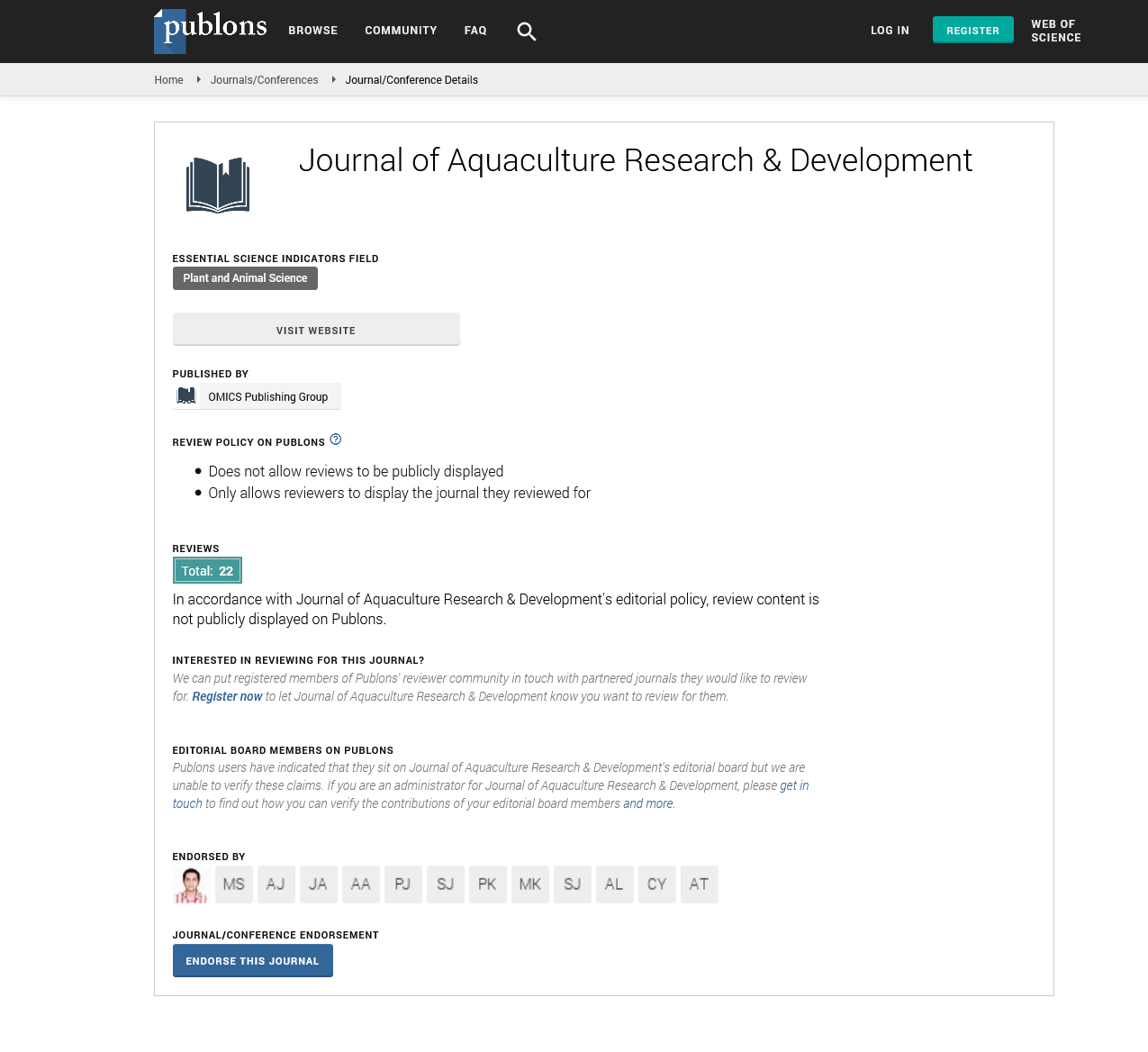Indexed In
- Online Access to Research in the Environment (OARE)
- Open J Gate
- Genamics JournalSeek
- JournalTOCs
- Scimago
- Ulrich's Periodicals Directory
- Access to Global Online Research in Agriculture (AGORA)
- Electronic Journals Library
- Centre for Agriculture and Biosciences International (CABI)
- RefSeek
- Directory of Research Journal Indexing (DRJI)
- Hamdard University
- EBSCO A-Z
- OCLC- WorldCat
- Scholarsteer
- SWB online catalog
- Virtual Library of Biology (vifabio)
- Publons
- MIAR
- University Grants Commission
- Euro Pub
- Google Scholar
Useful Links
Share This Page
Journal Flyer

Open Access Journals
- Agri and Aquaculture
- Biochemistry
- Bioinformatics & Systems Biology
- Business & Management
- Chemistry
- Clinical Sciences
- Engineering
- Food & Nutrition
- General Science
- Genetics & Molecular Biology
- Immunology & Microbiology
- Medical Sciences
- Neuroscience & Psychology
- Nursing & Health Care
- Pharmaceutical Sciences
Commentary - (2025) Volume 16, Issue 7
Sustaining Aquatic Life for Tomorrow
Sachia Middelboe*Received: 27-Jun-2025, Manuscript No. JARD-25-30052; Editor assigned: 30-Jun-2025, Pre QC No. JARD-25-30052 (PQ); Reviewed: 14-Jul-2025, QC No. JARD-25-30052; Revised: 21-Jul-2025, Manuscript No. JARD-25-30052 (R); Published: 28-Jul-2025, DOI: 10.35248/2155-9546.25.16.1008
Description
Aquatic farming, more commonly referred to as aqua culture, involves raising fish, crustaceans, mollusks, algae, or other aquatic organisms under managed conditions rather than relying solely on the wild. Its growth has followed human needs: as wild capture levels reached limits in many regions, reliance on managed rearing of aquatic species increased. In recent years, more than half of the seafood consumed globally comes from such operations.
One attraction of aquatic farming lies in its ability to provide controlled environments. Variables like stocking density, water quality, feed composition and disease control can be adjusted and monitored, allowing greater predictability in yield. For communities in inland or coastal zones, establishing ponds, cages, tanks, or recirculating systems has offered income sources, employment and nutritional security.
However, multiple challenges must be addressed to ensure that aquatic farming remains viable, responsible and sustainable. One challenge is feed. Many aquatic species, especially carnivorous fish and shrimp, require protein and lipids derived from marine sources. For decades, fishmeal and fish oil from wild-caught forage fish were the standard feed ingredients. As pressure on marine stocks grows, the cost and availability of such feed inputs have escalated. Some recent studies suggest that the ratio of wild fish used (directly and indirectly) per unit of farmed product may be higher than earlier estimates.
To reduce dependence on wild fish, researchers and firms are exploring alternatives such as insect meal, microbial proteins and plant-based ingredients. For example, experiments with black soldier fly larval meal have shown promise in replacing portions of traditional fishmeal in diets without harming growth or survival.
Another important aspect is water quality. In pond-based systems or cages, waste from uneaten feed, faeces and metabolic excretions accumulate and can degrade dissolved oxygen levels, raise ammonia, nitrite, or nitrate concentrations and stress or even kill cultured organisms. To manage this, techniques including biofloc systems are in use. In bio floc, certain bacteria convert nitrogenous wastes into microbial biomass, which in turn becomes food for cultured animals, forming a beneficial loop.
Closed or semi-closed Recirculating Systems (RAS) offer another path. These systems continually clean and reuse water, reducing the need for frequent exchanges with external water bodies. Such systems demand greater technical skill, energy input and investment in pumping, filtration, aeration and monitoring apparatus, but they allow facility sites to be placed farther from natural water bodies and reduce environmental discharge.
A further dimension is disease and parasite control. High stocking densities facilitate rapid disease transmission. Effective biosecurity measures to prevent pathogen introduction and spread is vital. Screening brood stock, quarantining new stock and disinfecting equipment are among the methods employed. Genetic improvement of cultured stocks, combined with selective breeding for disease resistance, has also contributed to better health outcomes. In marine setups using net pens or cages, structural integrity is critical. Damage to nets can lead to escapes, predator entry, or exposure to unfavorable conditions. Advanced sensor systems, robotics and monitoring technologies are being developed to inspect and maintain cage integrity in real time. One recent study describes the use of autonomous underwater robots with defect detection for net inspections.
Another technological frontier is the use of digital twin models for cage behaviour under environmental stresses. These models estimate net deformation and mooring line stress by combining field sensor data and computational models. Such an approach helps in early warning of failure and better design.
Beyond the technical, social and governance aspects matter deeply. Local communities must be consulted when aquaculture is introduced. Conflicts may arise over land or water use and culture systems must align with local ecosystem conditions. Regulation and monitoring are essential to avoid negative externalities such as pollution, biodiversity impacts, or harmful algal blooms.
As demand for aquatic protein continues to rise with population growth and shifting diets, the pressure on wild fisheries has grown. In many regions, wild capture fisheries are at or near sustainable limits. Aquatic farming has become the primary source of additional supply.
To ensure that this growth is equitable and environmentally sound, priorities include better feeds, energy efficiency, disease control, structural integrity, capacity building, regulation and environmental safeguards. With ongoing innovation and responsible application, aquatic farming can deliver protein, livelihoods and ecosystem balance to many regions around the world.
Citation: Middelboe S (2025). Sustaining Aquatic Life for Tomorrow. J Aquac Res Dev. 16:1008.
Copyright: © 2025 Middelboe S. This is an open access article distributed under the terms of the Creative Commons Attribution License, which permits unrestricted use, distribution, and reproduction in any medium, provided the original author and source are credited.

